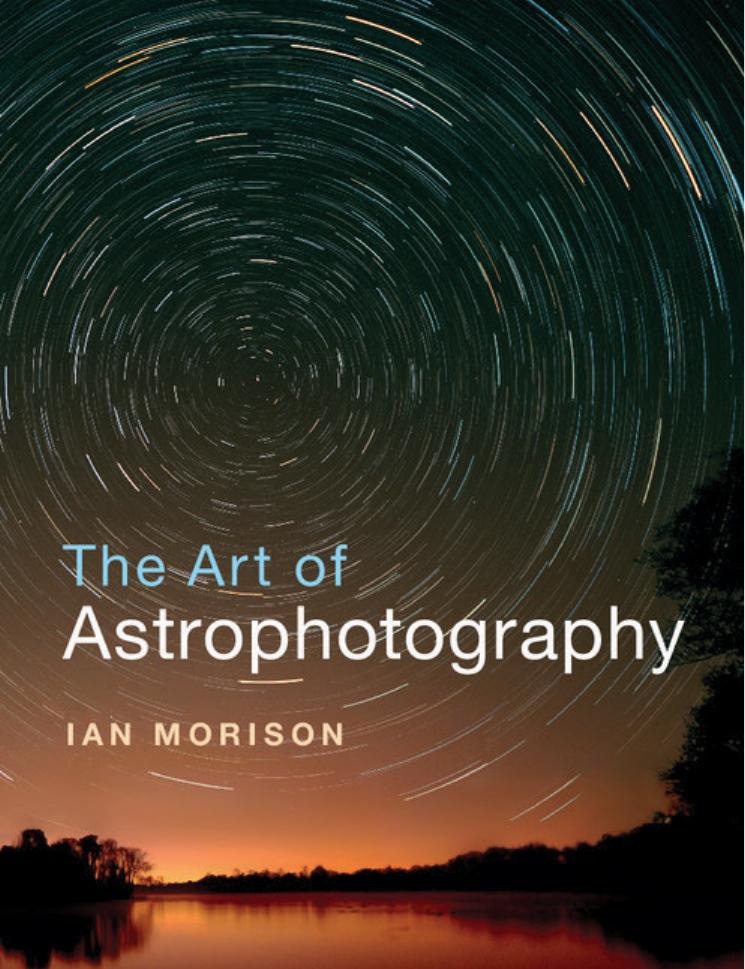The Art of Astrophotography by Ian Morison

Author:Ian Morison [Morison, Ian]
Language: eng
Format: azw3, pdf
Publisher: Cambridge University Press
Published: 2017-02-01T16:00:00+00:00
Figure 19.1 The PrimaLuce Lab 700Da cooled sensor DSLR camera
The alternative is to purchase a custom made astronomical camera incorporating a colour APSC sensor. The lowest cost of these OSC cameras currently on the market is the QHY QHY8L costing around £1000 as shown in Figure 19.2. The camera uses a 6 megapixel Sony sensor employing 7.8 micron square pixels and, most importantly, incorporates ‘set point cooling’ to cool the sensor to a specified temperature such as −20° Celsius. This makes the taking of dark frames at the same sensor temperature as the light frames far easier. The camera uses 16-bit digitisation and provides for 2×2 and 4×4 (monochrome only) binning modes. The 4×4 mode, which averages over 16 pixels, is significantly more sensitive and is used for rapid initial alignment on the selected object. The sensor is mounted in a slim body just 63 mm across, so making it perfect for use with a ‘HyperStar’ imaging system when the camera is mounted in the centre of the corrector plate of a Schmidt–Cassegrain telescope. To achieve this, the multiple power supplies required for the sensor electronics and Peltier cooling system are contained in a small separate unit connected to the camera with a multi-core cable. This is powered by a supplied mains adapter or 12 volt battery taking up to 4 amps current. As seen in Figure 19.2, the USB2 type B and power supply sockets are at the rear of the camera. As is often found with the USB2 type B connector, its placement in the socket of the QHY8L is not very secure. To overcome this problem, as also seen in Figure 19.2, a bracket (made using 3D printing) is supplied to mount on the camera in order to hold the connectors tightly in place. At somewhat greater cost, QHY manufacture a 10 megapixel version to give increased resolution. The ability to use the monochrome binning modes for initial alignment on faint objects makes these cooled CCD colour cameras – and those made by other manufactures such as the SBIG STF-8300C (which is the colour version of the STF-8300M monochrome camera that will be discussed in Chapter 20) – somewhat more practical than modified DSLR cameras. Many employ the rather smaller (17.96 × 13.52mm), 8 megapixel, Kodak KAH-8300 CCD array, which has superb low noise characteristics. The Moravian Instruments G2-8300 Colour CCD Camera has a very similar specification as does the Atik camera’s 383L+.
Download
This site does not store any files on its server. We only index and link to content provided by other sites. Please contact the content providers to delete copyright contents if any and email us, we'll remove relevant links or contents immediately.
| Aeronautics & Astronautics | Astronomy |
| Astrophysics & Space Science | Comets, Meteors & Asteroids |
| Cosmology | Mars |
| Solar System | Star-Gazing |
| Telescopes | UFOs |
Tools of Titans by Timothy Ferriss(8305)
Turbulence by E. J. Noyes(7980)
Secrets of Antigravity Propulsion: Tesla, UFOs, and Classified Aerospace Technology by Ph.D. Paul A. Laviolette(5333)
Astrophysics for People in a Hurry by Neil DeGrasse Tyson(5151)
Room 212 by Kate Stewart(5072)
Design of Trajectory Optimization Approach for Space Maneuver Vehicle Skip Entry Problems by Runqi Chai & Al Savvaris & Antonios Tsourdos & Senchun Chai(5037)
Pale Blue Dot by Carl Sagan(4956)
The David Icke Guide to the Global Conspiracy (and how to end it) by David Icke(4657)
A Journey Through Divination and Astronomy by Publishing Pottermore(4363)
Goodbye Paradise(3761)
Apollo 8 by Jeffrey Kluger(3668)
COSMOS by Carl Sagan(3589)
The Five People You Meet in Heaven by Mitch Albom(3520)
Losing the Nobel Prize by Brian Keating(3518)
How to Read Water: Clues and Patterns from Puddles to the Sea (Natural Navigation) by Tristan Gooley(3433)
Brief Answers to the Big Questions by Stephen Hawking(3393)
How to Read Nature by Tristan Gooley(3292)
The Order of Time by Carlo Rovelli(3162)
A Brief History of Time by Stephen Hawking(2992)
